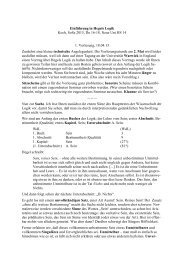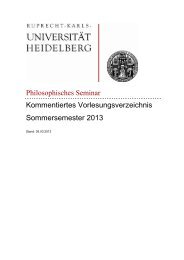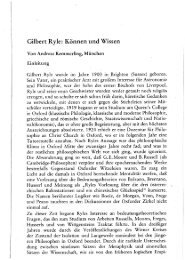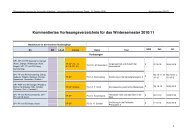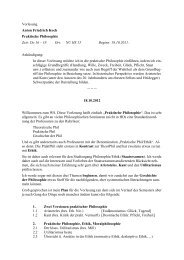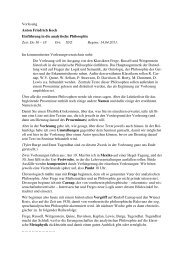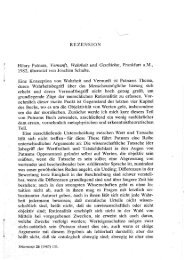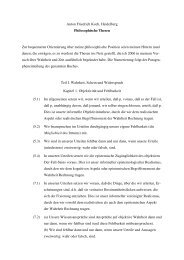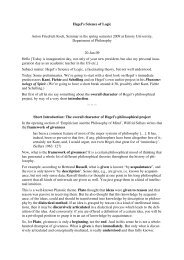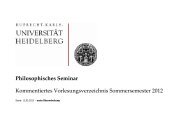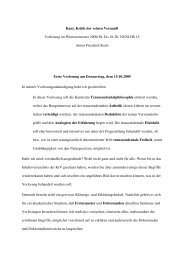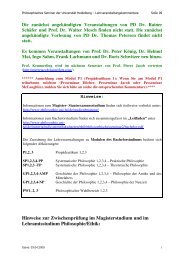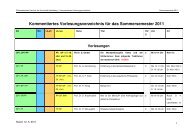KANT'S CRITIQUE OF TELEOLOGY IN BIOLOGICAL EXPLANATION
KANT'S CRITIQUE OF TELEOLOGY IN BIOLOGICAL EXPLANATION
KANT'S CRITIQUE OF TELEOLOGY IN BIOLOGICAL EXPLANATION
You also want an ePaper? Increase the reach of your titles
YUMPU automatically turns print PDFs into web optimized ePapers that Google loves.
132 Antinomy of Judgment<br />
must have an antinomy; therefore Kant has for architectonic reasons<br />
conjured up something that he can call an antinomy. The<br />
Dialectic is supposed basically to have no philosophical content; the<br />
so-called antinomy is supposed already to be resolved as soon as it is<br />
clearly formulated. The question arises then, of course, why Kant<br />
wrote so much about it. The alternative seems to be posed: either not<br />
to take this particular text seriously or not to take Kant's system<br />
seriously. For instance, some recent commentators have postulated<br />
two different drafts which Kant simply collated and sent to press. 1<br />
On the other hand, one can take the text seriously and change the<br />
system; it has been suggested that the category of causality be<br />
transformed into a merely regulative principle, or that a thirteenth<br />
category be introduced for teleology, or even that a third form of<br />
intuition for purposiveness be admitted. 2 My interpretation will<br />
attempt to avoid such acts of desperation without however denying<br />
the objective grounds that have led to them. The goal is to show that<br />
Kant in the Dialectic of teleological judgment means something that<br />
a) significantly resembles what he actually says, and b) is compatible<br />
with the basic positions of the Critique of Pure Reason. From<br />
the analysis of Kant's presentation of the antinomy (Section 3.2) and<br />
of the interpretative difficulties of previous commentators (Section<br />
3.3) some more specific considerations will be worked out and articulated.<br />
The reason for the unsatisfactory character of the available<br />
interpretations lies mainly with Kant himself. His presentation and<br />
his elucidations of the antinomy create many problems and any<br />
interpretation of the Dialectic can be confronted with particular passages<br />
which it can scarcely explain. As a first step, an interpretation<br />
of the text as a whole must be established in order to show what<br />
Kant is actually getting at. Due to these particular circumstances<br />
my procedure will on occasion seem rather philological. It will<br />
sometimes be necessary to go through the text line by line in order to<br />
show what Kant must have meant; on the other hand, it will occa-<br />
1 Cf. Delekat, pp. 463f; Löw, pp. 206f. This kind of interpretation can take on a<br />
life of its own: Delekat infers from the content of the text that it must consist of two<br />
different draft versions. Löw, who cites Delekat, assumes as fact that two drafts<br />
have been spliced together and bases his interpretation of the text's content on this<br />
assumption. No external evidence whatever for the two draft thesis has been<br />
offered.<br />
2 Cf. Driesch, "Kant und das Ganze"; Ernst, Zweckbegriff, p. 64; Van de Pitte,<br />
"The Role," pp. 114f.



